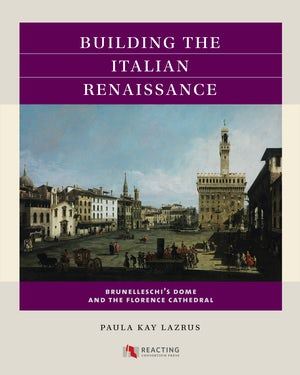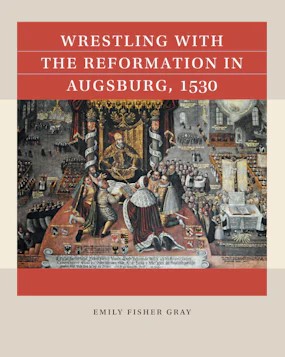 |
DUOMO
Building the Italian Renaissance:
Brunelleschi's Dome and the Florence Cathedral
by Paula Kay Lazrus
If you can explain how to build the Dome, you can get the commission to build it. Building the Italian Renaissance focuses on the competition to select a team to execute the final architectural challenge of the cathedral of Santa Maria del Fiore--the erection of its dome. The project takes place at an important time for Florence. The city is transitioning from a High Medieval world view into the new dynamics and ideas and will lead to the full flowering of what we know as the Renaissance. Thus the competition at the heart of this game plays out against the background of new ideas about citizenship, aesthetics, history (and its application to the present), and new technology. The central challenge is to expose players to complex and multifaceted situations and to individuals that animated life in Florence in the early 1400s. Humanism as a guiding philosophy is taking root and scholars are looking for ways to link the mercantile city to the glories of Rome and to the wisdom of the ancients across many fields. The game gives students a chance to enter into the world of Florence in the early 1400s to develop an understanding of the challenges and complexity of such a major artistic and technical undertaking while providing an opportunity to grasp the interdisciplinary nature of major public works. |
Details
|
Using the Game
Class Size and Scalability Class Time It's not listed as variable, but options are provided in the Instructor's Manual for shortening or lengthening the game to support class schedule or objectives. Possible Reacting Game Pairings
|
 GAME MATERIALS
GAME MATERIALS
Confirmed instructors who are not yet members can access basic instructor materials. Reacting Consortium members can access all downloadable materials (including expanded and updated materials) below. You will be asked to sign in before downloading.
Gamebook Students need a Gamebook, which includes directions, resources, and historical content. The Duomo Gamebook is published by Reacting Consortium Press. PAPERBACK ISBN: 978-1-4696-5339-6 EBOOK ISBN: 978-1-4696-5340-2 Available wherever books are sold. | Role Sheets and Add'l Materials Students also need a Role Sheet, which contains biographical information, role-specific resources or assignments, and their character's secret victory objectives. VERSION 5.1. Updated 2018. .pdf file. .zip file of .pdf files. | Instructor's Manual The Instructor's Manual includes guidance for assigning roles, presenting historical context, assignments, activities and discussion topics, and more. VERSION 5.1. Updated 2018. .docx file. |
Paula Kay Lazrus
Paula Kay Lazrus is a Professor in the Institute for Core Studies, Dept. of Sociology and Anthropology at St. John’s University in New York. An archaeologist, Paula has worked in Italy since 1980, is a past president of the NY Society of the Archaeological Institute of America, and is a current member of the Reacting board. | Reacting and Related Titles
|
Reviews
"This game's greatest strength is its interdisciplinarity. It draws upon philosophy, history, engineering, architecture, art history, … probably others as well. It integrates these differing approaches to thinking in a meaningful, cohesive way." | "The game seeks to apprise students of the wide scope and interdisciplinary nature of Renaissance learning—a valuable objective, especially in an age of specialization. It provides students with a hands-on introduction to basic architectural and engineering principles. And it may be unique in showing students how things are made." | "There are not enough pre-modern games, so this is helpful to fill that void. It would work in a variety of classes and at many levels: art history, history, Italian studies, etc. It has multiple factional orientations that suggest that the past was complex." |
Members can contact game authors directly if they have questions about using the game. We also invite instructors join our Facebook Faculty Lounge, where you'll find a wonderful community eager to help and answer questions.
|
|
|



